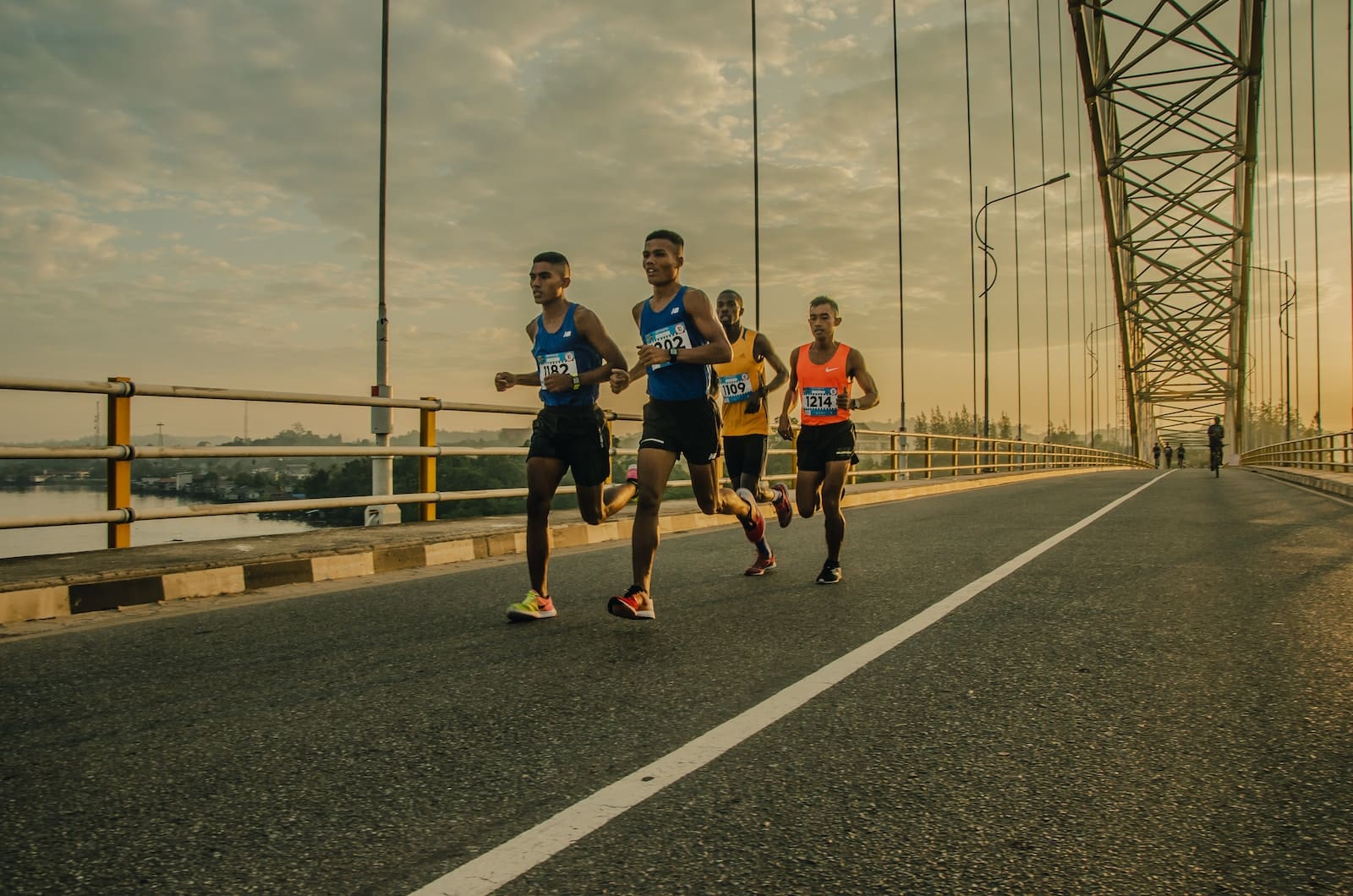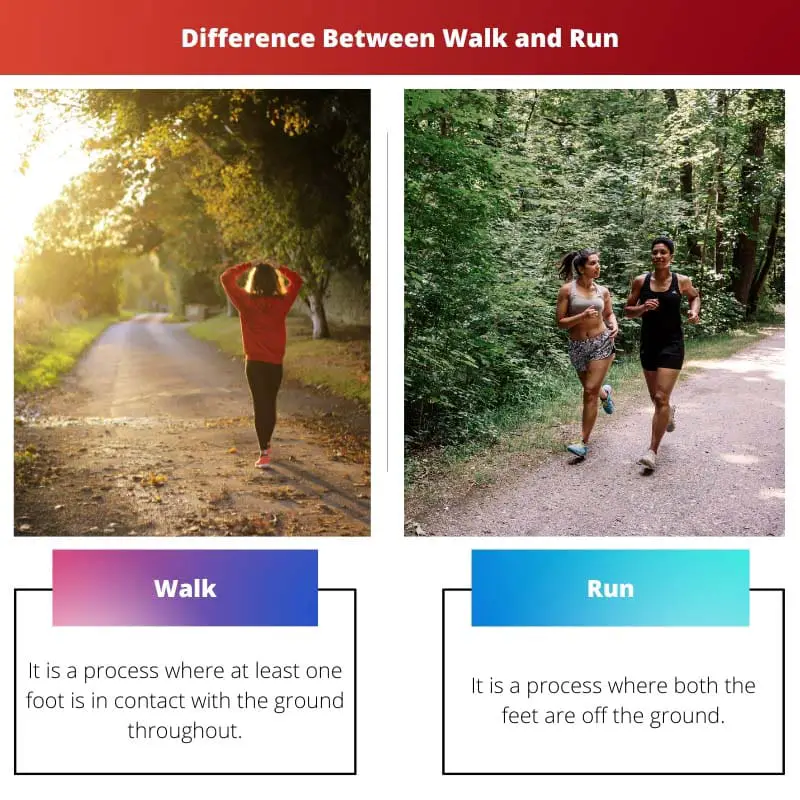Terrestrial locomotion is carried out by various organisms for food, shelter, protection, in search of potential mates, escape from danger, or fulfilling other necessities.
The locomotion on land can be broadly divided into two types based on speed and energy expenditure. They are – walking or running.
Key Takeaways
- Walking involves maintaining contact with the ground, resulting in a lower impact on joints.
- Running requires greater physical exertion and has a higher impact on joints.
- Both activities provide cardiovascular benefits, with running burning more calories per unit of time.
Walk vs Run
The difference between walking and running is that walking is a type of natural terrestrial locomotion that does not have any severe impact on the joints,. In contrast, running is a type of pounding exercise and can cause inflammation of anchors, knees, and even the hips.

In walking, the number of calories burned is comparatively less. So the amount of energy required to walk is also relatively lower.
The process of walking is also known as an inverted pendulum gait. The pace and speed of walking are slower, but can also be increased.
Walking can be divided into various types depending on the speed and energy expenditure.
On the other hand, in running, The number of calories burned are comparatively more. So the amount of energy required to walk is higher.
The process can explode the muscle, which adds to the performance of fast and slow twitching of the muscle fibers. The oxygen requirement of a runner is higher than the process of walking.
Comparison Table
| Parameters of Comparison | Walk | Run |
|---|---|---|
| Definition | It is a process where at least one foot is in contact with the ground throughout | The angular and linear momentum of lower limbs in walking is slower |
| Velocity | The angular and linear momentum of lower limbs in running is faster | More rapid movement from one point to another |
| Speed | Slower | Faster |
| Intensity | Involves lower intensity | Involves higher intensity |
| Type of movement | Natural movement from one point to another | Faster movement from one point to another |
What is Walk?
Walk, or the process of walking, is a type of terrestrial locomotion found in legged organisms.
The process of walking is also known as an inverted pendulum gait, which implies that the body vaults over limbs or stiff limbs with every step.
Ancestors of modern humans had been walking similarly to present walking, which is evident from the footprints discovered on the shore of Kenya, about 3 million years ago.
The derivation of the word walk is from an old English term called “weal can”, which means to roll. Apart from the standard type of walking, walking can be of several other variants.
It can also refer to snowshoeing, scrambling, trekking or cross-country skiing, beach walking, and Nordic walking. The walk which is done at a faster pace is known as speed walking.
Walking at a speed of around 7 to 9 kilometres per hour from the natural range of walking gait is known as power walking.
Walking is also related to various other athletic events like pedestrianism, race walking, and other forms of a walk.
A rhythmic breathing technique synchronized during the process of walking is known as Afghan walking, which was mainly discovered in the 1980s.
The double pendulum does the process of human walking. This process has a forward motion in which the leg leaves the ground and swings forward.
The first sweep is known as the first pendulum. The next leg hits the ground with the heel first rolls to the store and is known as an inverted pendulum.

What is Run?
Run, or the process of running, is a type of terrestrial locomotion. The process can be characterized by its aerial phase. The method includes all the feet that are above the ground.
The pace and speed of running are faster than other types of gait. The running process has proven to improve health and the expectancy of life in various forms.
During running, the changes in kinetic and potential energy co-occur within the stride.
Depending upon the running speed, it can refer to different varieties of running, like sprinting, jogging, and others.
Historically, the ancestors of humankind had to run over long distances to hunt animals and gather food.
Running is also considered the most accessible sport in the world. In various parts of the world, competitive running originated religious festivals.
The evolution of running in humankind is considered at least four and a half million years ago from the apelike ancestors.
The process of running can be classified into two main phases.
They are stance and swing and are divided regarding the lower extremity. It can be further classified into initial swing, absorption, terminal swing, and propulsion.
The beginning of the running cycle is marked with absorption and footstrike. For running, the idle posture of the runner is slightly tilted forward and should be upright throughout.

Main Differences Between Walk and Run
- Walking has a longer stance phase, while running has a double swing phase.
- The swing phase in walking is shorter while the swing phase in running is longer.
- Walking is a slower process while running is a faster process.
- The range of motions required in walking is less, while the range of motion required in running is greater.
- Walking is a relaxed process, and the muscles do not get tired easily while running is a pounding exercise, and the muscles get tired soon.




